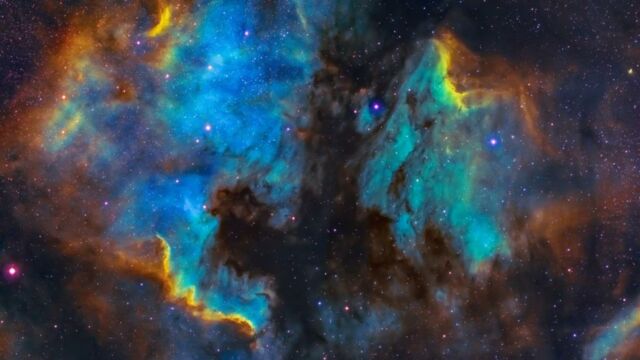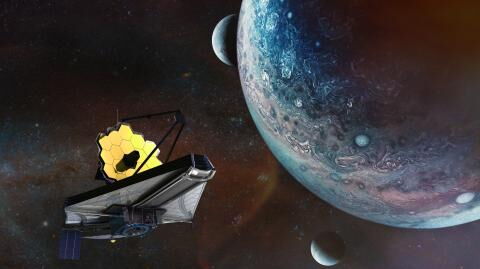Thanks to the James Webb telescope, astronomers have been able to observe a type of galaxy previously considered rare and virtually invisible.
Discover our latest podcast
AzTECC71, a cosmic 'monster'
AzTECC71 is the name of the galaxy in formation on which the James Webb space telescope has turned its spotlight. This is not the first time that astronomers have been interested in this galaxy: Hubble, James Webb's predecessor, had already attempted to photograph it before... with unsatisfactory results.
Indeed, AzTECC71 is difficult to observe due to its nature, as we learn from a press release published in Eurekalert:
Astronomers from the COSMOS-Web collaboration have identified the AzTECC71 object as a dusty star-forming galaxy. In other words, it's a galaxy busy forming lots of new stars, but shrouded in a dusty veil that's hard to pierce.
'It's a real monster'
The more recent James Webb telescope is obviously more sophisticated than Hubble, and its instruments enable it to capture and observe what was invisible or almost invisible to its 'big brother'. The difference for astronomers? Day and night. Jed McKinney, lead author of a new study published in the Astrophysical Journal, said:
Until now, the only way to see galaxies in the early universe was from an optical point of view, thanks to Hubble (...) This means that our understanding of the evolutionary history of galaxies is biased because we only see the unobscured, less dusty galaxies.
Blown away by AzTECC71's vision, the astronomer described the galaxy as 'a real monster'. Indeed, the image seems to present a ghostly face of cosmic proportions.
#JamesWebbSpaceTelescope reveals #AzTECC71 star-forming galaxy from early universe, contradicting previous assumptions about cosmic history and galaxy evolution. #SciTechDailyhttps://t.co/oBNG9nVMc7
— AI News (@DailyAITechNews) December 4, 2023
Read more:
⋙ NASA's James Webb Space Telescope reveals a new exoplanet with CO2, is it habitable for humans?
⋙ NASA's James Webb Space Telescope detects potential 'proof of life' on a super-Earth
⋙ James Webb Telescope found an exoplanet that looks like something from Star Wars
⋙ Space Pollution: Could the debris surrounding the planet cause a collision in the future?
⋙ NASA detects a planet where it rains... sand!
⋙ Here's what would happen if a planet went rogue in our solar system
⋙
Could a solar flare ever destroy the planet?
This article has been translated from Gentside FR.
Sources used:
Eurekalert: Ghostlike dusty galaxy reappears in James Webb Space Telescope image
The Astrophysical Journal: A Near-infrared-faint, Far-infrared-luminous Dusty Galaxy at z ∼ 5 in COSMOS-Web
SciTechDaily: Webb Captures Mysterious Reappearance of a Ghostly Object – “This Thing Is a Real Monster!”















